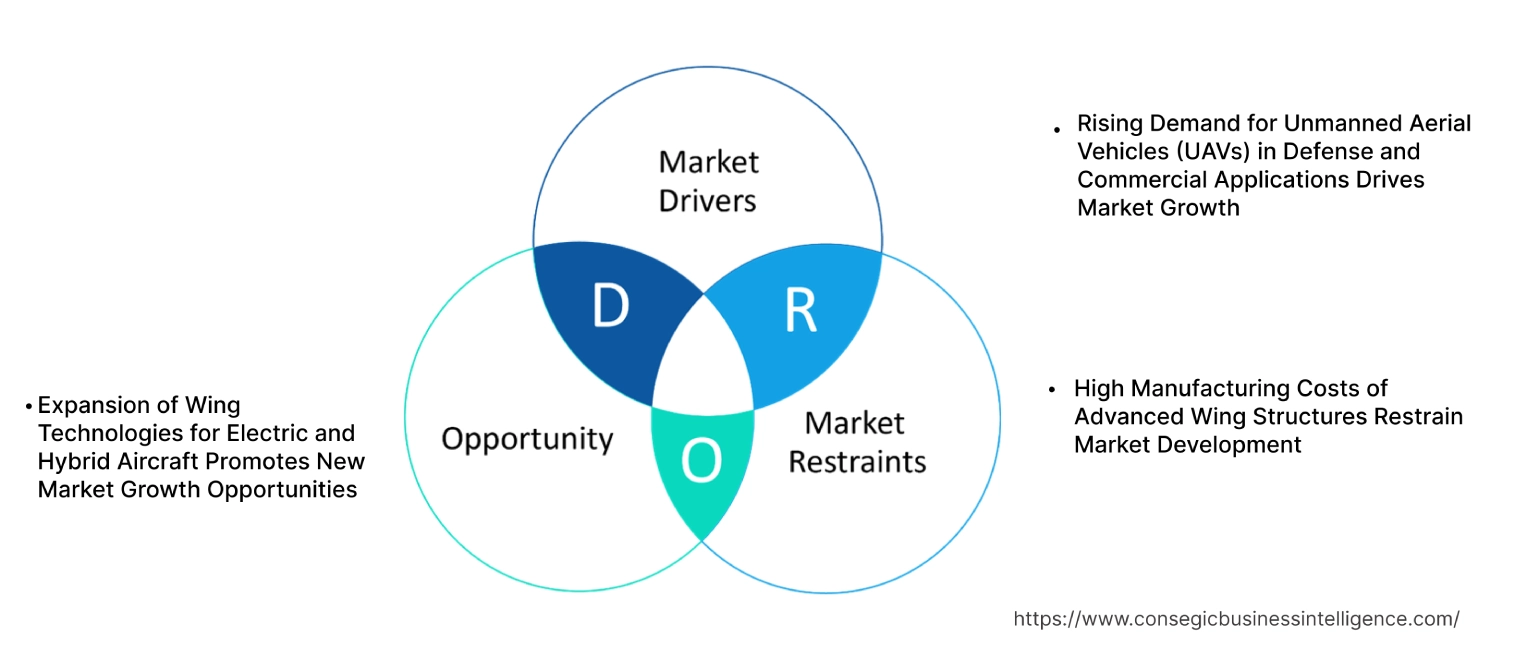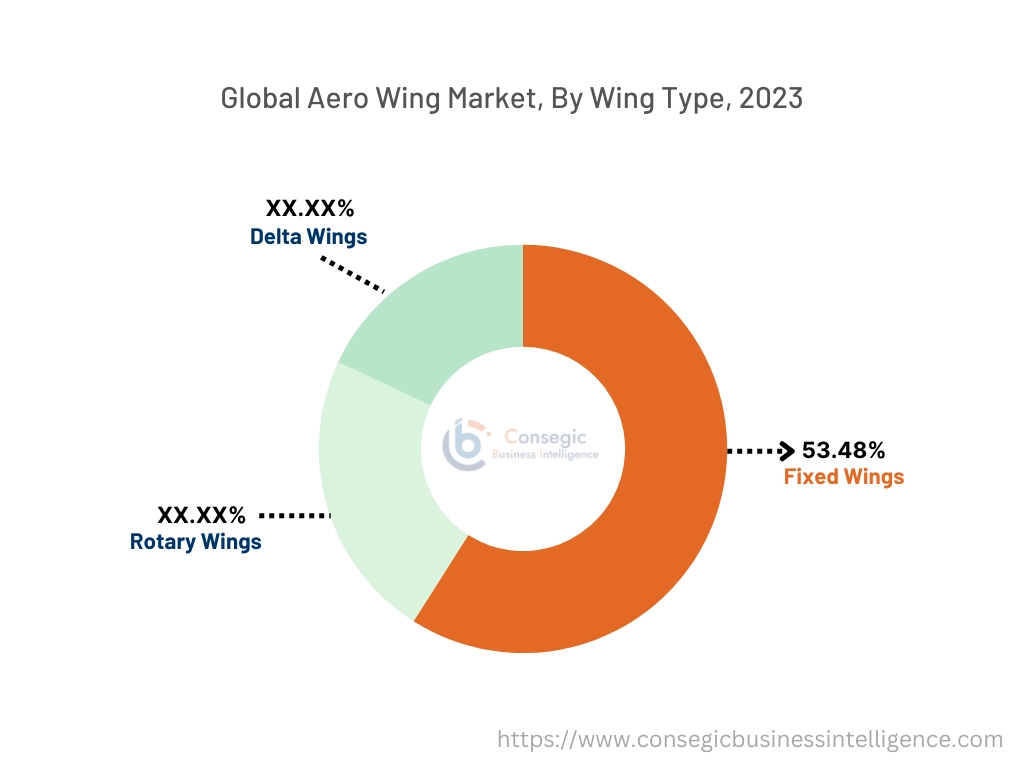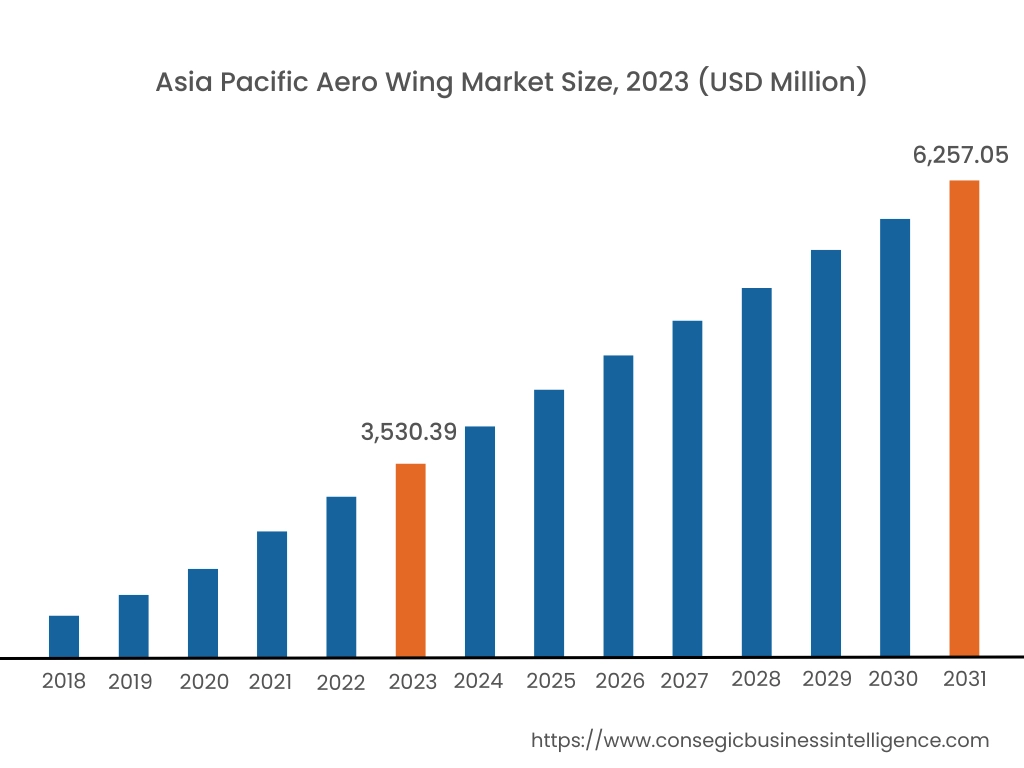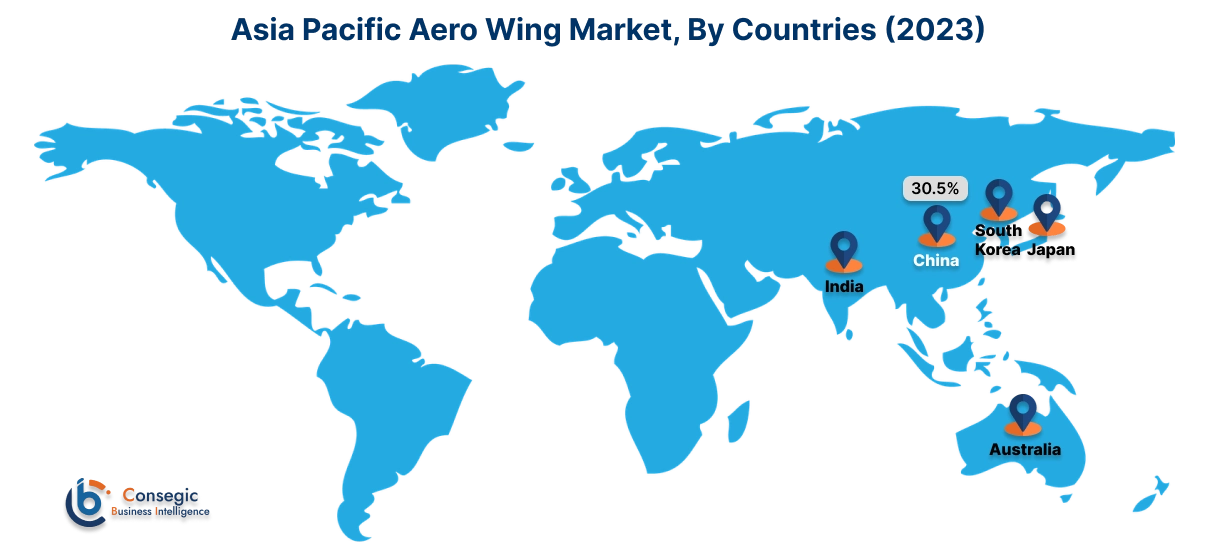- Summary
- Table Of Content
- Methodology
Aero Wing Market Size:
Aero Wing Market size is estimated to reach over USD 22,354.60 Million by 2031 from a value of USD 12,887.39 Million in 2023 and is projected to grow by USD 13,576.35 Million in 2024, growing at a CAGR of 7.1% from 2024 to 2031.
Aero Wing Market Scope & Overview:
An aero wing is a fundamental structural component of an aircraft designed to generate lift and provide stability during flight. These components include various substructures such as main wings, flaps, ailerons, and winglets, which work together to optimize aerodynamic performance. Constructed from advanced materials like composites and alloys, aero wings are engineered to reduce weight while ensuring strength and durability under various flight conditions.
Aero wings are integral to the functionality of a wide range of aircraft, including commercial airplanes, military jets, and unmanned aerial vehicles (UAVs). Their designs vary based on the aircraft's intended use, incorporating features such as high-lift devices and adjustable control surfaces to enhance maneuverability and efficiency. Modern manufacturing techniques and materials further enhance the performance, reliability, and longevity of these critical components.
End-users of aero wing systems include aircraft manufacturers, maintenance and repair organizations (MROs), and defense contractors, who rely on these components to ensure safety, performance, and operational reliability across diverse aviation applications.
Aero Wing Market Dynamics - (DRO) :

Key Drivers:
Rising Demand for Unmanned Aerial Vehicles (UAVs) in Defense and Commercial Applications Drives Market Growth
The expanding use of unmanned aerial vehicles (UAVs) across defense, surveillance, and commercial sectors is fueling demand for advanced wing designs. UAVs require lightweight, high-performance wings to achieve extended flight durations, greater maneuverability, and higher payload capacities. Innovations in aero wing designs, such as blended-wing-body structures and folding wing tips, are enhancing the operational efficiency of UAVs. Additionally, the integration of modular wings that are easily adapted for different mission profiles is gaining traction. The growing investments in UAV development by defense agencies and private companies are driving the advancements in aero wing technologies tailored for these platforms. These developments support the aero wing market growth, particularly in improving performance, durability, and adaptability for UAVs used in various military and commercial applications.
Key Restraints :
High Manufacturing Costs of Advanced Wing Structures Restrain Market Development
The high manufacturing costs associated with advanced wing structures, particularly those made from composite materials, are a significant constraint for the market. The production process for composite wings involves specialized equipment, skilled labor, and extensive quality control measures to ensure structural integrity and compliance with aerospace standards. These factors drive up production costs, making composite wings less accessible to smaller aircraft manufacturers and operators. The costs associated with repairing and maintaining composite wings, which require specialized repair techniques, create a challenge for widespread adoption, especially in cost-sensitive markets. This affects the aero wing market demand, as industries with limited budgets may hesitate to invest in high-maintenance composite materials.
Future Opportunities :
Expansion of Wing Technologies for Electric and Hybrid Aircraft Promotes New Market Growth Opportunities
The growing development of electric and hybrid-electric aircraft is creating new opportunities for innovative wing designs. Electric aircraft require wings with optimized aerodynamics and lightweight structures to maximize energy efficiency and battery range. Manufacturers are exploring novel wing configurations, such as distributed propulsion systems integrated into wing designs, to improve performance and sustainability. Additionally, the rise of urban air mobility (UAM) and regional electric aircraft has increased demand for compact, high-efficiency wing designs tailored for short-haul and urban operations. These emerging segments present significant aero wing market opportunities for manufacturers to develop advanced wing technologies aligned with sustainable aviation goals.
Aero Wing Market Segmental Analysis :
By Platform:
Based on the platform, the market is segmented into Commercial Aviation, Military Aviation, General Aviation, and Unmanned Aerial Vehicles (UAVs).
The Commercial Aviation segment accounted for the largest revenue of the total aero wing market share in 2023.
- Commercial aviation heavily relies on advanced wing structures to enhance fuel efficiency, reduce drag, and improve passenger and cargo capacities.
- The adoption of new-generation aircraft, including narrow-body and wide-body planes, drives the extensive use of lightweight and aerodynamically optimized wing designs.
- Leading aircraft manufacturers like Airbus and Boeing are incorporating innovative materials and aerodynamic technologies to improve performance, further strengthening the commercial aviation segment.
- The dominance of the commercial aviation segment is attributed to the expanding airline industry and the push for sustainable aviation solutions, contributing to the aero wing market expansion.
The Unmanned Aerial Vehicles (UAVs) segment is expected to register the fastest CAGR during the forecast period.
- UAVs are increasingly adopted in defense, logistics, agriculture, and surveillance, necessitating specialized wings designed for diverse operational requirements.
- Lightweight composite materials are extensively used in UAV wings to maximize payload capacity and extend flight durations.
- The rising interest in autonomous systems and drone delivery solutions across sectors like e-commerce and defense drives the adoption of advanced UAV wings.
- As per the aero wing market analysis, the rapid extension of the UAV segment is fueled by technological advancements and the increasing role of drones in various applications.
By Wing Type:
Based on wing type, the market is segmented into Fixed Wings, Rotary Wings, and Delta Wings.
The Fixed Wings segment held the largest revenue of 59.04% of the total aero wing market share in 2023.
- Fixed wings are extensively used in commercial planes, military jets, and UAVs due to their efficient lift-to-drag ratio, providing superior flight stability and performance.
- Fixed wings are extensively used in commercial planes, military jets, and UAVs due to their efficient lift-to-drag ratio, providing superior flight stability and performance.
- Fixed wings offer unmatched versatility, making them suitable for a wide array of aviation platforms, from passenger aircraft to high-performance fighter jets.
- As per aero wing market trends, the segment's dominance is attributed to its broad applicability across diverse aviation sectors and its pivotal role in meeting the operational needs of both commercial and military aircraft.
The Delta Wings segment is expected to register the fastest CAGR during the forecast period.
- Delta wings are predominantly utilized in supersonic and fighter jets, offering exceptional stability at high speeds and superior maneuverability in challenging flight conditions.
- Military aviation significantly depends on delta wings for combat aircraft, ensuring agility and optimal performance during critical operations and missions.
- Increased investments in the development of supersonic aircraft and next-generation fighter jets are driving the adoption of advanced delta wing designs.
- Advancements in materials like composites and high-strength alloys are driving the aero wing market growth by enhancing the durability and performance of delta wings.

By Material Type:
Based on material type, the market is segmented into Metals, Alloys, and Composites.
The Composites segment accounted for the largest revenue share in 2023.
- Composites, such as carbon fiber-reinforced polymers, are extensively used in modern wing structures to reduce weight while maintaining strength and durability.
- These materials enable enhanced fuel efficiency and reduced maintenance costs, meeting the aviation industry's sustainability goals.
- The use of composites in wings is growing due to their superior performance characteristics and compatibility with next-generation aircraft designs.
- The dominance of the composites segment is driven by the increasing emphasis on lightweight materials to optimize fuel consumption and enhance aircraft performance further facilitating the aero wing market demand.
The Alloys segment is expected to register the fastest CAGR during the forecast period.
- Aluminum and titanium-based alloys are extensively utilized in wing manufacturing due to their superior strength-to-weight ratio and durability against environmental stressors.
- Aluminum alloys dominate the commercial aviation sector, offering cost-effective solutions for lightweight structures, whereas titanium alloys are primarily used in military aviation for their exceptional resistance to extreme temperatures and conditions.
- Continuous innovations in alloy formulations, such as the development of high-performance and corrosion-resistant variants, are driving the adoption of alloys in advanced aircraft designs.
- The rapid enlargement of the alloy segment is attributed to its critical role in enhancing aircraft performance, structural integrity, and operational efficiency across both commercial and defense aviation platforms.
Regional Analysis:
The regions covered are North America, Europe, Asia Pacific, the Middle East and Africa, and Latin America.

Asia Pacific region was valued at USD 3,530.39 Million in 2023. Moreover, it is projected to grow by USD 3,725.87 Million in 2024 and reach over USD 6,257.05 Million by 2031. Out of these, China accounted for the largest share of 30.5% in 2023. Asia-Pacific is witnessing the fastest growth in the aero wing market, driven by rapid industrialization and urbanization in countries like China, India, and Japan. The region has become a global hub for aerospace production, with a strong emphasis on commercial aircraft to support the growing air travel demand. The increasing investments in defense and the expansion of low-cost carriers are further propelling the aero wing market expansion.

North America is estimated to reach over USD 7,334.54 Million by 2031 from a value of USD 4,231.90 Million in 2023 and is projected to grow by USD 4,457.82 Million in 2024. North America holds a substantial share of the aero wing market, primarily due to the robust aerospace industry and the presence of major aircraft manufacturers. The United States, in particular, leads the market with a strong demand for both commercial and military aircraft. The focus on enhancing fuel efficiency and reducing emissions has led to the adoption of advanced composite materials in wing manufacturing.
Europe represents a significant portion of the global aero wing market, with countries like Germany, France, and the United Kingdom leading in terms of adoption and innovation. The region benefits from a well-established aerospace sector and a strong emphasis on sustainability. The need for lightweight and fuel-efficient wings is increasing, driven by stringent emission norms and the push towards electric and hybrid aircraft.
The Middle East & Africa region shows promising potential in the aero wing market, particularly in countries like Saudi Arabia, the United Arab Emirates, and South Africa. Increasing investments in aviation infrastructure and the extension of national airlines are driving the need for new aircraft and, consequently, aero wings. The focus on diversifying economies and reducing dependence on oil revenues has led to growth in the aviation sector.
Latin America is an emerging market for aero wings, with Brazil and Mexico being the primary growth drivers. The rising adoption of commercial aircraft, improving air travel infrastructure, and increasing focus on enhancing aviation safety contribute to the market's progress. Government initiatives aimed at modernizing aviation infrastructure and promoting regional connectivity are supporting aero wing market opportunities.
Top Key Players & Market Share Insights:
The Aero Wing market is highly competitive with major players providing products and services to the national and international markets. Key players are adopting several strategies in research and development (R&D), product innovation, and end-user launches to hold a strong position in the global Aero Wing market. Key players in the Aero Wing industry include-
- Airbus S.A.S. (France)
- The Boeing Company (USA}
- Lockheed Martin Corporation (USA)
- Northrop Grumman Corporation (USA)
- General Electric Company (USA)
- Safran S.A. (France)
- Rolls-Royce Holdings plc (UK)
- Leonardo S.p.A. (Italy)
- Thales Group (France)
- Embraer S.A. (Brazil)
Recent Industry Developments :
Investments & Funding:
- In August 2024, Alaska Airlines announced an investment in JetZero to advance the development of innovative aircraft technology. This partnership focuses on the design of an environmentally friendly, blended-wing-body aircraft that aims to reduce carbon emissions while enhancing fuel efficiency. JetZero's technology aligns with Alaska Airlines' sustainability goals, reinforcing its commitment to sustainable aviation and reducing its environmental impact.
- In December 2023, Arkema completed the acquisition of Arc Building Products, an Ireland-based company specializing in the production of construction adhesives and sealants. This strategic move strengthens Arkema's position in the global construction chemicals industry and expands its product portfolio.
Partnerships & Collaborations:
- In April 2024, Natilus and Monte formed a strategic partnership to develop a revolutionary hybrid-electric aircraft aimed at reducing carbon emissions and enhancing fuel efficiency. This collaboration focuses on the production of a new cargo aircraft with a blended-wing-body design, leveraging Monte's expertise in aerospace and aviation. The project is part of Natilus' commitment to revolutionizing air cargo transportation with sustainable, cost-effective, and technologically advanced solutions.
Aero Wing Market Report Insights :
| Report Attributes | Report Details |
| Study Timeline | 2018-2031 |
| Market Size in 2031 | USD 22,354.60 Million |
| CAGR (2024-2031) | 7.1% |
| By Platform |
|
| By Wing Type |
|
| By Material Type |
|
| By Region |
|
| Key Players |
|
| North America | U.S. Canada Mexico |
| Europe | U.K. Germany France Spain Italy Russia Benelux Rest of Europe |
| APAC | China South Korea Japan India Australia ASEAN Rest of Asia-Pacific |
| Middle East and Africa | GCC Turkey South Africa Rest of MEA |
| LATAM | Brazil Argentina Chile Rest of LATAM |
| Report Coverage |
|
Key Questions Answered in the Report
How big is the aero wing market? +
Aero Wing Market size is estimated to reach over USD 22,354.60 Million by 2031 from a value of USD 12,887.39 Million in 2023 and is projected to grow by USD 13,576.35 Million in 2024, growing at a CAGR of 7.1% from 2024 to 2031.
What specific segmentation details are covered in the Aero Wing Market report? +
The Aero Wing market report includes segmentation details for the platform (commercial aviation, military aviation, general aviation, UAVs), wing type (fixed wings, rotary wings, delta wings), material type (metals, alloys, composites), and region.
Which is the fastest-growing segment in the Aero Wing market? +
The Unmanned Aerial Vehicles (UAVs) segment is expected to register the fastest CAGR during the forecast period, driven by technological advancements and the increasing adoption of drones in various applications.
Who are the major players in the Aero Wing market? +
The major players in the Aero Wing market include Airbus S.A.S. (France), The Boeing Company (USA), Lockheed Martin Corporation (USA), Northrop Grumman Corporation (USA), General Electric Company (USA), Safran S.A. (France), Rolls-Royce Holdings plc (UK), Leonardo S.p.A. (Italy), Thales Group (France), and Embraer S.A. (Brazil).

